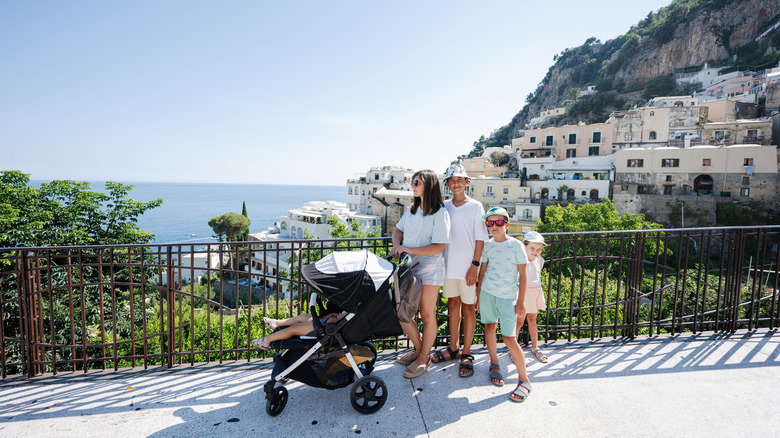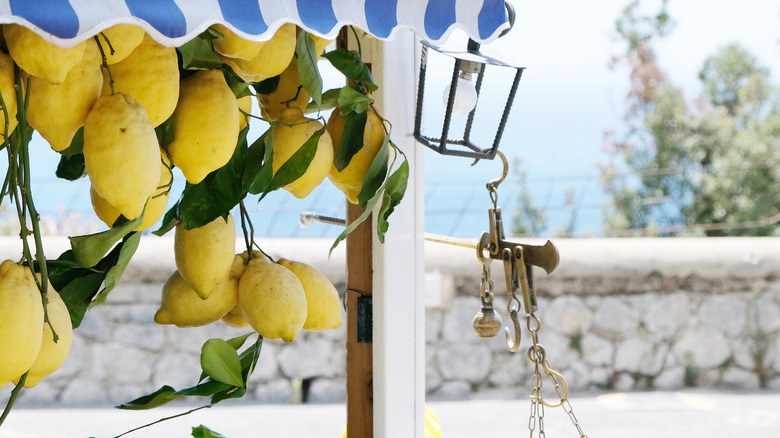Italy’s Amalfi Coast is undoubtedly one of the most beautiful destinations in the world — where the sea and mountains merge with colorful buildings and Mediterranean charm, earning it the nickname “The Divine Coast.” However, with this great landscape comes an even greater number of stairs — a challenge for those with mobility issues, injuries, baby strollers, or the general preference for easier walking. But don’t let that deter you from visiting! Maiori may be just what you’re looking for as a little hidden gem on the Amalfi Coast, offering beauty and accessibility in equal measure.
Unlike its steeper neighbors, Maiori has a uniquely flat layout on the Amalfi Coast in southern Italy. It’s part of the province of Salerno, in the Campania region situated along the Tyrrhenian Sea. Travelers can expect the town’s main streets to be less physically demanding, as the inclines are more gradual with fewer steps — a big difference compared to other places on the Amalfi Coast like Positano, where just your hotel could have more than a hundred stairs!
For beach lovers, Maiori has the longest unbroken stretch of beachfront on the Amalfi Coast (about two-thirds of a mile), which makes it easier to navigate and offers ample opportunity for strolls along the sea without the need to climb steep inclines or navigate cumbersome staircases. Not every trip to a beautiful Italian coast has to be physically demanding, and Maiori proves that. Its ease of access goes beyond its famous large-grain sand beach and well into town.
Maiori: Historical charms without the climbs

Maiori is steeped in history, dating back as far as the Etruscans and the Roman Empire until formally built into a town by the ninth century. Unfortunately, much of this ancient charm was lost to disaster in 1954 when a storm hit, causing the Reginna Maior River to flood, resulting in the complete destruction of the historic city center. Still standing, however, is the oddly shaped 9th-century Castle of San Nicola de Thoro-Plano, but it’ll cost you over 700 steps.
The 19th-century Mezzacapo (Miramare) Castle, however, is an exception. This fairytale-like castle is an architectural delight, with its cone-shaped spires set against a mountainous seaside landscape. It’s remarkable to think that it was inspired by a castle depicted on a matchbox after a nobleman visited the banks of the Loire in France. You can enjoy the Palazzo Mezzacapo Gardens, a beautiful courtyard-like space with pools of blue-green water and stunning rock formations, both wheelchair accessible and great for families with strollers. You can even say overnight if you’d like — the castle is both an attraction and a hotel.
Additionally, the Church of Santa Maria a Mare is another notable landmark. Situated on a small hill, it is one of the few places where some climbing is inevitable. However, the steps are manageable compared to the more strenuous climbs found elsewhere on the coast. The church, adorned with a huge dome featuring bright yellow and green majolica tiles, offers breathtaking views of the town and sea.
Contemporary delights and further exploration of the Amalfi Coast

Maiori carries a contemporary feel, especially with its old city restored into a new one. However, even in the 1940s, ’50s, and ’60s, it was considered beautiful and eventually became a favorite location for film directors like Roberto Rossellini. He filmed many movies there, including “Paisà” (1946), “Viaggio in Italia” (1954), and “La Macchina Ammazzacattivi” (1952). Just walking through the town allows you to immerse yourself in its cinematic history, especially along Casale dei Cicerali, one of Maiori’s oldest streets.
Dining in Maiori is all about enjoying fresh-caught seafood at restaurants along the coast and main promenade. Additionally, sampling the local limoncello, a traditional Italian lemon liqueur, is a must. The lemons in this region are celebrated for their distinctive flavor. If you’re feeling adventurous, you might also explore “The Path of Lemons,” a scenic pedestrian route through lemon groves that links to the nearby town of Minori.
For those looking to explore more of the Amalfi Coast (a UNESCO World Heritage Site) beyond Maiori, the town serves as an excellent base. One reason is there are plenty of local transportation options! The Maiori ferries provide extensive connections with Salerno, Amalfi, Minori, Cetara, Vietri sul Mare, Positano, and Capri through more than 50 daily crossings. Otherwise, buses like SITA and taxis are easy to find. So go ahead and explore Maiori without stairs; you now have no excuses! For more tips, check out our guide on how to unlock accessible travel.

